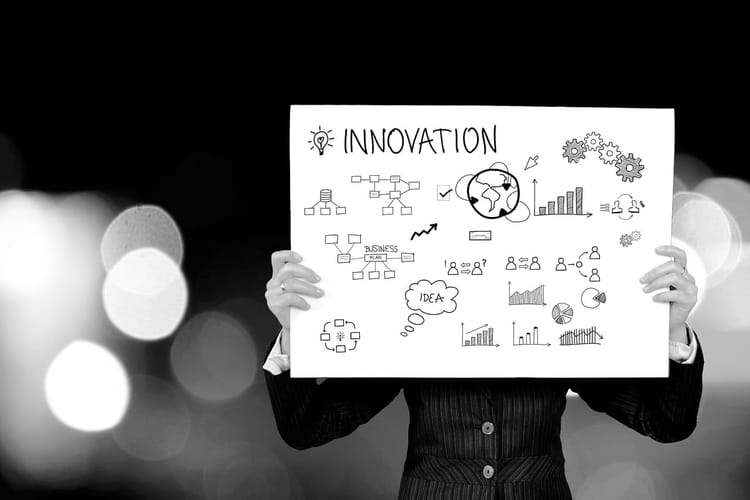Realising the Value of LegalTechnology in 2025: A People-First Approach for Sustainable Transformation

As we navigate through 2025, the UK legal sector stands at a critical inflection point. The convergence of artificial intelligence, evolving client expectations, regulatory pressures including Fixed Recoverable Costs expansion, and economic uncertainty has created an unprecedented demand for operational excellence. Yet across the sector, we continue to witness a troubling pattern: significant technology investments that fail to deliver promised returns, not due to technological limitations, but because of a fundamental oversight - the human element.
This comprehensive analysis examines why a people-first approach to legal technology adoption is not merely advisable but essential for sustainable transformation in modern legal practice. Drawing on extensive experience with UK legal operations, we explore the critical success factors that separate transformational technology implementations from expensive failures.
The 2025 Legal Technology Landscape
Market Context and Pressures
The UK legal market in 2025 operates under intensified pressures that make technology adoption both more urgent and more complex than ever before. Client demands for transparency, predictability, and value have reached unprecedented levels, driven by economic uncertainty and sophisticated procurement processes. The expansion of Fixed Recoverable Costs has fundamentally altered the economics of dispute resolution, forcing practices to reconsider their operational models entirely.
Simultaneously, the regulatory environment continues to evolve, with increased scrutiny on billing practices, data protection requirements, and operational transparency. The Solicitors Regulation Authority's focus on innovation and outcomes-based regulation has created both opportunities and challenges for technology adoption.
The Technology Adoption Paradox
Despite record levels of investment in legal technology - from AI-powered document review platforms to comprehensive practice management systems - many UK legal practices report disappointing returns on their technology investments. Industry surveys consistently show that while 85% of firms have invested significantly in new technology over the past three years, only 35% report meaningful improvements in efficiency or profitability.
This paradox reveals a fundamental misunderstanding about the nature of technological transformation. Technology, regardless of its sophistication, remains a tool. Without the right approach to human adoption, the most advanced AI platform or the most comprehensive case management system becomes merely an expensive digital paperweight.
The People-First Imperative
Understanding the Human Technology Spectrum
Within any legal practice, attitudes towards technology form a complex spectrum that directly impacts adoption success. At one extreme, we find technology enthusiasts - typically younger practitioners or those with strong analytical backgrounds - who embrace new systems enthusiastically and often become informal champions for change. These individuals frequently represent 15-20% of a typical legal workforce.
At the opposite end lies a significant minority - often 20-25% of practitioners - who view technology with deep skepticism or anxiety. This group includes highly experienced practitioners whose expertise has been built around traditional methodologies, support staff concerned about job security, and individuals who simply lack confidence in their digital capabilities.
The majority - approximately 55-60% of legal professionals - occupy the middle ground. They are pragmatic about technology, neither enthusiastic nor resistant, but requiring clear demonstration of value and adequate support to engage meaningfully with new systems.
The Cost of Ignoring the Human Element
The financial and operational costs of technology implementations that ignore human factors are substantial and often underestimated. Consider a mid-sized litigation practice that invested £250,000 in a state-of-the-art case management platform. Eighteen months post-implementation, utilization rates remained below 40%, with many fee-earners reverting to familiar spreadsheets and email-based workflows. The practice not only failed to realize efficiency gains but actually experienced decreased productivity during the prolonged transition period.
This scenario repeats across the sector because many practices approach technology deployment as a technical exercise rather than a change management initiative. The assumption that sophisticated users will naturally adapt to sophisticated systems consistently proves false in practice.
Psychological Barriers to Technology Adoption
Understanding the psychological dimensions of technology resistance is crucial for legal practices seeking transformation. Research in organizational psychology identifies several key barriers that are particularly relevant in legal environments:
Competence Anxiety: Many experienced practitioners fear that new technology will expose gaps in their digital capabilities, potentially undermining their professional credibility. This is particularly acute in legal practice, where expertise and competence are closely tied to professional identity.
Loss of Control: Traditional legal practice gives practitioners significant autonomy over their workflows and methodologies. New technology can feel like an imposition of external control, particularly when systems enforce standardized processes that conflict with established individual practices.
Cognitive Overload: Legal practitioners already manage complex, high-pressure workloads. The additional cognitive burden of learning new systems can feel overwhelming, leading to avoidance behaviours even when practitioners intellectually recognise the potential benefits.
Change Fatigue: Many practices have experienced multiple failed or partially successful technology initiatives, creating skepticism about new implementations regardless of their merits.
Strategic Framework for People-First Technology Adoption
Phase 1: Foundation Building
Stakeholder Mapping and Engagement
Successful technology transformation begins with comprehensive stakeholder analysis that goes beyond simple organizational charts. Identify not only formal decision-makers but also informal influencers - the senior associate whose opinion carries weight with junior staff, the practice manager who coordinates daily operations, the IT-savvy paralegal who colleagues turn to for technical support.
Develop detailed personas for different user groups, understanding their daily workflows, pain points, and motivations. A commercial property solicitor managing high-volume transactions has fundamentally different needs and concerns than a complex litigation specialist handling bet-the-company disputes. Generic training and communication approaches fail because they don't address these specific contexts.
Creating Psychological Safety
Before any technology training begins, establish an environment where practitioners feel safe to admit confusion, make mistakes, and ask questions without judgment. This is particularly important in legal culture, where admitting uncertainty can feel professionally dangerous.
Implement "learning time" policies that explicitly protect time for technology familiarization without billing pressure. Establish mentorship programs pairing technology-confident practitioners with those requiring additional support. Create feedback mechanisms that encourage honest communication about implementation challenges without fear of negative consequences.
Phase 2: Customised Implementation Strategy
Tailored Communication Approaches
Different practitioner groups require fundamentally different communication strategies about technology implementation. Technology enthusiasts need detailed technical information and early access to advanced features. They become natural advocates when they understand the system's full capabilities.
Pragmatic users require clear value propositions tied to their specific work contexts. Instead of generic efficiency claims, demonstrate how the new case management system will specifically reduce the time spent on disclosure organization for commercial litigation matters, or how automated precedent systems will improve accuracy in property transactions.
Skeptical users need patient, individualised support that acknowledges their concerns while demonstrating immediate, tangible benefits. Focus on small wins that build confidence gradually rather than attempting comprehensive adoption immediately.
Phased Deployment Methodology
Rather than organization-wide implementations that can feel overwhelming, adopt phased deployment approaches that allow for learning and adjustment. Begin with pilot groups comprising natural advocates and willing pragmatists. Use these pilots to refine processes, identify unexpected challenges, and develop success stories that can influence broader adoption.
Phase deployment by practice area or matter type, allowing teams to develop expertise in specific applications before expanding to broader functionality. This approach reduces cognitive overload while building competence progressively.
Phase 3: Embedding and Optimisation
Performance Measurement Beyond Usage Statistics
Traditional technology adoption metrics - login frequency, feature utilisation rates, system uptime - provide limited insight into actual value realisation. Develop metrics that reflect meaningful business outcomes: matter profitability improvements, client satisfaction increases, error reduction rates, and time-to-completion decreases for specific processes.
Implement qualitative feedback mechanisms that capture practitioner experiences beyond simple satisfaction surveys. Regular focus groups, one-on-one interviews, and workflow observation sessions provide insights into how technology is actually being used and where improvements are needed.
Continuous Improvement Culture
Technology adoption is not a finite project but an ongoing organisational capability. Establish regular review cycles that assess both technical performance and user experience. Create pathways for practitioners to suggest improvements and participate in system evolution.
Develop internal expertise through training selected practitioners as "super users" who can provide peer support and serve as bridges between IT departments and practice groups. This approach reduces dependency on external vendors while building internal change management capabilities.
Pricing Strategy Integration
Technology's Impact on Legal Pricing Models
The relationship between technology adoption and pricing strategy represents one of the most significant opportunities for forward-thinking legal practices. Traditional billing models, particularly time-based charging, actively discourage efficiency improvements that technology can deliver. Practices that successfully integrate technology with innovative pricing models create sustainable competitive advantages.
Value-Based Pricing and Technology Synergy
Technology enables the data collection and analysis necessary for sophisticated value-based pricing models. Case management systems that capture detailed workflow data allow practices to understand actual cost structures beyond simple time tracking. Document automation platforms that reduce drafting time enable fixed-fee arrangements that remain profitable while delivering client value.
However, realizing these benefits requires practitioners who understand both the technology's capabilities and the pricing implications. Training programs must address not only system functionality but also how technology changes the economics of legal service delivery.
Client Communication and Transparency
Modern clients increasingly expect transparency about how technology impacts their legal costs. Practices that can articulate how AI-powered document review reduces discovery costs, or how automated precedent systems improve accuracy while reducing time requirements, build stronger client relationships while justifying pricing models.
Develop client communication strategies that explain technology benefits in business terms rather than technical jargon. Create pricing proposals that explicitly detail how technology deployment benefits the client while supporting practice profitability.
Process Optimisation Through Technology
Workflow Standardisation and Automation
Technology's greatest value often lies not in replacing human judgment but in eliminating routine administrative tasks that consume practitioner time without adding client value. Successful implementations identify these opportunities systematically rather than simply automating existing inefficient processes.
Conduct detailed workflow analysis before technology deployment, identifying bottlenecks, redundancies, and value-adding versus administrative activities. Design technology implementations that specifically address these inefficiencies while preserving practitioner autonomy over substantive legal work.
Quality Assurance and Risk Management
Modern legal technology offers sophisticated quality assurance capabilities that can reduce professional liability risks while improving client outcomes. AI-powered document review platforms can identify potentially privileged materials more consistently than manual review. Automated deadline management systems can prevent missed filing dates that damage client interests and practice reputations.
However, these benefits only materialise when practitioners understand and trust the technology sufficiently to rely on its outputs. Training programs must address not only system operation but also the legal and ethical implications of technology-assisted work.
Implementation Best Practices
Leadership and Change Management
Executive Commitment Beyond Financial Investment
Technology transformation requires visible, sustained leadership commitment that goes far beyond budget approval. Senior partners must model adoption behaviours, participate in training programs, and consistently communicate the strategic importance of successful implementation.
Appoint technology champions at partner level who can address practitioner concerns with authority and credibility. These individuals should combine strong legal credentials with genuine enthusiasm for technology-enabled practice improvement.
Cultural Change Management
Legal practice culture often emphasises individual expertise and autonomy, which can conflict with technology systems that enforce standardised processes. Address these cultural tensions explicitly rather than assuming technology adoption will naturally occur.
Develop narratives that frame technology adoption as enhancing rather than replacing professional expertise. Emphasise how technology handles routine tasks, freeing practitioners to focus on higher-value strategic and advisory work that clients truly value.
Training and Support Infrastructure
Multi-Modal Learning Approaches
Legal practitioners have diverse learning preferences and varying technological backgrounds. Develop training programs that accommodate these differences through multiple delivery methods: hands-on workshops for kinesthetics learners, detailed documentation for those who prefer written reference materials, video tutorials for visual learners, and one-on-one coaching for practitioners requiring individualised support.
Create role-specific training modules that address actual work contexts rather than generic system overviews. A family law practitioner needs to understand how the case management system handles court deadlines and client communication, not comprehensive functionality they'll never use.
Ongoing Support Systems
Technology adoption is rarely a linear process. Practitioners may embrace basic functionality quickly but struggle with advanced features months later. Establish support systems that provide assistance beyond initial implementation: regular user groups, peer mentoring programs, and accessible help desk services that understand legal context.
Develop internal expertise through comprehensive train-the-trainer programs that create sustainable support capabilities. External vendor support should supplement rather than replace internal capabilities, ensuring long-term success regardless of vendor relationships.
Measuring Success and ROI
Financial Metrics and Business Intelligence
Beyond Cost Reduction to Value Creation
While cost reduction represents an important benefit of legal technology, the most significant returns come from value creation: faster matter resolution, improved client satisfaction, enhanced competitive positioning, and increased capacity for high-value work.
Develop measurement frameworks that capture these broader benefits rather than focusing exclusively on cost metrics. Track matter profitability improvements, client retention rates, and fee-earner satisfaction alongside traditional efficiency measures.
Practice-Specific Performance Indicators
Different practice areas require different success metrics. Litigation practices might focus on discovery efficiency improvements and case outcome predictions. Corporate practices might emphasise transaction completion speed and due diligence accuracy. Family law practices might prioritise client communication effectiveness and case management organisation.
Design measurement frameworks that reflect the specific value drivers for each practice area while maintaining overall organisational coherence.
Client Impact Assessment
Service Quality and Client Satisfaction
Technology should ultimately improve client outcomes and satisfaction. Develop systematic approaches to measuring these impacts: client feedback surveys that specifically address technology-enabled improvements, matter outcome analysis that identifies technology contributions, and service delivery metrics that demonstrate enhanced responsiveness.
Create client communication strategies that highlight technology benefits without overwhelming clients with technical details. Focus on business outcomes: faster response times, improved accuracy, enhanced security, and more predictable costs.
Competitive Advantage Development
Successful technology adoption should create sustainable competitive advantages that differentiate practices in increasingly crowded markets. Monitor competitive intelligence about technology adoption trends while developing unique capabilities that are difficult for competitors to replicate.
Document success stories and case studies that demonstrate technology-enabled value creation. These narratives become powerful business development tools while building internal confidence in transformation initiatives.
Future-Proofing Technology Investments
Emerging Technology Trends
Artificial Intelligence and Machine Learning Integration
The legal sector's AI adoption is accelerating rapidly, with applications spanning document review, contract analysis, legal research, and predictive analytics. However, successful AI integration requires practitioners who understand both the technology's capabilities and limitations.
Develop AI literacy programs that help practitioners identify appropriate use cases while understanding when human oversight remains essential. Create ethical frameworks for AI deployment that address professional responsibility concerns while enabling innovation.
Blockchain and Smart Contract Implications
Distributed ledger technology and smart contracts represent emerging areas with significant implications for legal practice. While full adoption may be years away, practices need strategic frameworks for evaluating and preparing for these developments.
Consider pilot projects in appropriate practice areas - real estate transactions, supply chain agreements, intellectual property licensing - that provide learning opportunities without significant risk exposure.
Regulatory and Compliance Considerations
Data Protection and Cybersecurity
Technology adoption must occur within robust data protection and cybersecurity frameworks that meet evolving regulatory requirements. The intersection of legal technology and data protection law creates complex compliance challenges that require careful navigation.
Develop comprehensive data governance frameworks that address technology deployment while ensuring client confidentiality and regulatory compliance. Create incident response procedures that address both technical and legal aspects of potential data breaches.
Professional Responsibility and Technology
The intersection of legal technology and professional responsibility continues to evolve as regulators grapple with AI, automation, and changing service delivery models. Stay current with regulatory guidance while developing internal policies that ensure technology deployment remains consistent with professional obligations.
Create regular training programs that address the ethical implications of technology-assisted legal practice. Develop decision-making frameworks that help practitioners navigate complex ethical questions about AI assistance, automated document generation, and client communication technologies.
Conclusion: The Path Forward
As we progress through 2025, the legal sector's relationship with technology will continue to evolve rapidly. Practices that succeed in this environment will be those that recognise technology adoption as fundamentally a human challenge rather than a technical one. The most sophisticated AI platforms and comprehensive practice management systems deliver value only when the people using them are equipped, motivated, and supported to do so effectively.
The framework outlined in this analysis - emphasising stakeholder engagement, customised implementation, continuous improvement, and integration with broader business strategy - provides a roadmap for sustainable technology transformation. However, the specific application of these principles must reflect each practice's unique culture, client base, and strategic objectives.
For UK legal practices operating in an increasingly competitive and regulated environment, the choice is not whether to embrace technology but how to do so in ways that create sustainable competitive advantages while enhancing rather than disrupting the human expertise that remains at the heart of legal practice.
The practices that thrive in the years ahead will be those that successfully balance technological capability with human-centered implementation, creating environments where technology amplifies rather than replaces professional expertise. This balance requires ongoing commitment, systematic approach, and recognition that successful transformation is ultimately about people, not just technology.
The investment in getting this balance right extends far beyond the immediate returns from any single technology implementation. It creates organisational capabilities for ongoing adaptation and innovation that will serve practices well as the technological landscape continues to evolve. In an era where change is the only constant, these capabilities represent perhaps the most valuable investment any legal practice can make.


